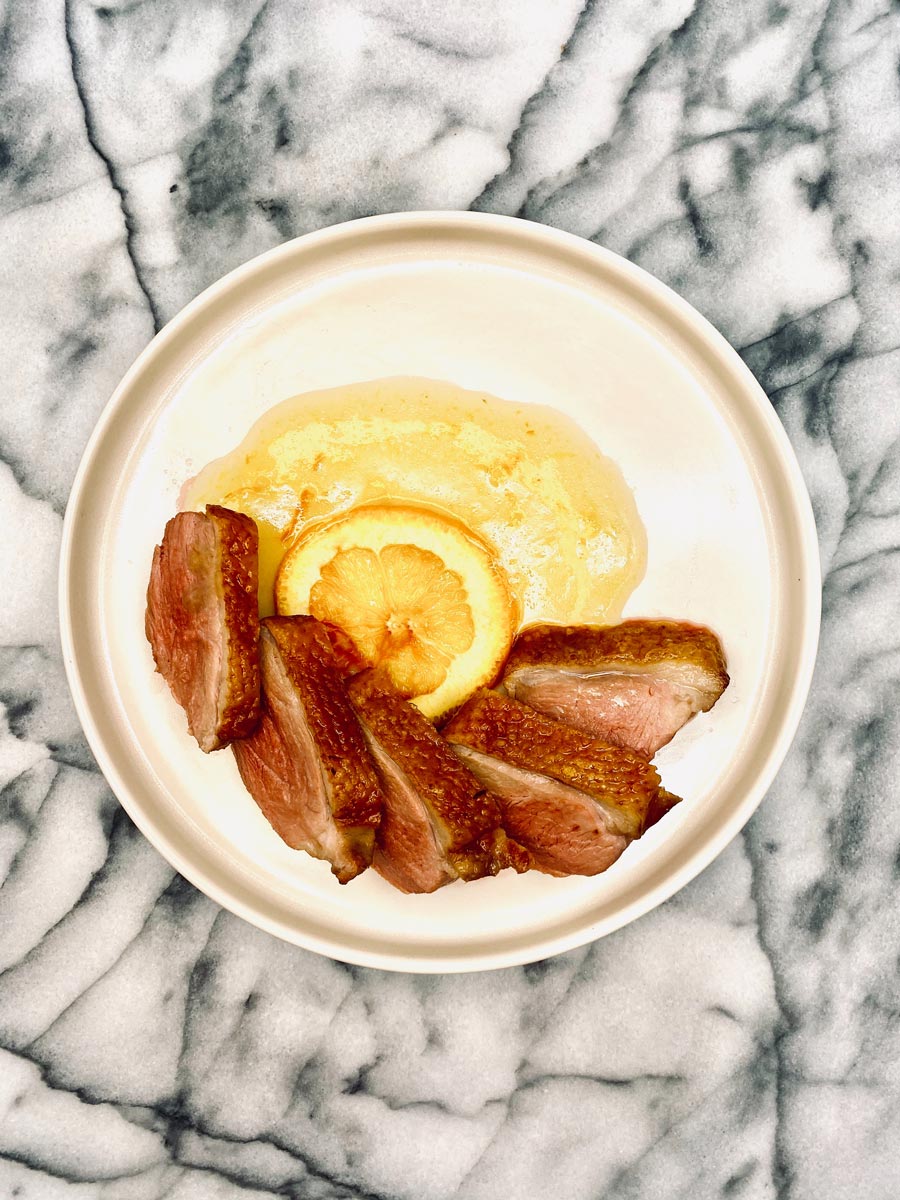
DUCK ‘N’ RUM
We used to run and hide from the daunting task of roasting the perfect duck breast, but no more! Thanks to a life-changing (at least culinarily) Masterclass by Thomas Keller, we can now pan roast with pride. We added our own L’orange L’rhum sauce with Kavana Gold Rum, and voila! We present to you our Duck ‘n’ Rum.
THOMAS KELLER’S PAN ROASTED DUCK BREAST INGREDIENTS (Makes 1)
- 2 Duck Breasts (even if you’re cooking just for you, trust us, you’ll want the 2nd one)
- Tip: if you can’t find fresh duck breasts, frozen breasts cook up incredibly well as long as you let them thaw before beginning the instructions below.
Instructions
Rinse and pat the duck breasts dry and set on a baking sheet or plate skin side up. Set uncovered in the refrigerator to allow the surface of the skin to dry for three days (this drying process is super important to achieve the crispy skin we know and love and eliminate any chance of chewiness). After the three days, take the duck breasts out of the refrigerator. They should be at room temperature before you start to cook them. Begin by trimming the silver skin off the duck breasts, taking care to not trim too close to the meat (there are multiple tutorials online – this is also very important to keep chewy bites off the menu). Then prick the skin of the duck using a sausage pricker to allow the fat to render out (you could also score the skin using a knife, but Chef Keller advises that this is more difficult – take care not to pierce the flesh). Heat the sauté pan over medium heat, and pour in a thin layer of canola (or your fav) oil. Lay the duck breast into the pan, skin side down, starting with the end of the breast nearest to you and laying away from you to avoid splashing. Since pan-roasting is a more gentle, slower cooking process than sautéing, there will only be a subtle sizzle when the duck breast hits the oil (if you get a big sizzle, your pan is too hot). Give the pan a little shake to keep the skin from sticking. Continue cooking, pressing down on the duck anywhere that the skin needs more contact with the pan in order to crisp—but not moving the breasts around. When the duck breasts are about 80% done, baste with the rendered fat (you can use a baster, or simply spoon the fat over the top of the breasts). Cook until medium rare, or an internal temp of 123 degrees F. When the duck breasts are 90% done, pour off excess fat from the pan, and flip the duck breasts to “kiss” the meat side. Increase the heat slightly and cook the duck breasts just long enough to color it. Transfer the duck breasts to a rack or paper towel-lined tray skin side down to drain. Let rest at least 5 minutes. Slice and serve. Tip: when you pour off the excess fat from the pan, save it for later. It’s an amazing addition to soups, sauces, or the very popular duck-fat fries.L’ORANGE L’RHUM (ORANGE MARMALADE) SAUCE
- 1/3 Cup Orange Marmalade (We Like Crosse & Blackwell)
- 1/4 Cup Fresh Orange Juice
- 1 oz. Kavana Gold Rum
- 1 oz. Simple Syrup To Sweetly Thin
Instructions
In a small saucepan, over medium heat, combine orange marmalade, orange juice, rum and simple syrup to a gentle roll, stirring constantly. Lower heat and simmer 3 to 4 minutes. Serve with the duck breasts.
